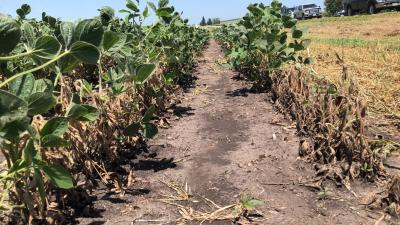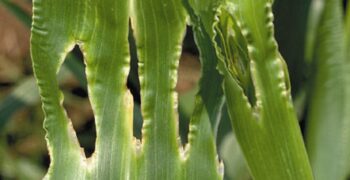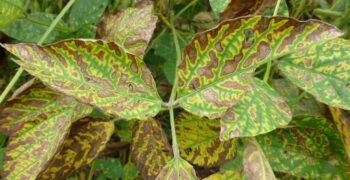Background:
Soybean gall midge is a pest that infects field edges on larger fields. Smaller fields could see a field-wide infestation. The larvae feed on the soybean stem and destroy the nutrient and water movement. At first, the stems become dark and discolored at the soil line. Once they are done feeding, a gall will form that causes swelling, discoloration or outgrowth of the stem. This causes significant yield reduction, especially on the edges of fields.
Identification:
Adult gall midges measure ¼ inch long with long legs and slender bodies. They have orange abdomens and mottled wings. The antennas and long legs are wrapped in light and dark bands.
 The larvae are small maggots that start small and are clear. They will turn to a milky white or light orange in their second stage. In their third stage, they grow in size and become a bright orange.
The larvae are small maggots that start small and are clear. They will turn to a milky white or light orange in their second stage. In their third stage, they grow in size and become a bright orange.
Scouting:
Look for soybean gall midges at the bases of the plants in the first few rows. You’ll be looking for dark discoloration lesions at or above the soil line. If you find a lesion, peel back the layers of stem to see if there are larvae. (Soybean Gall Midge Iowa State)



